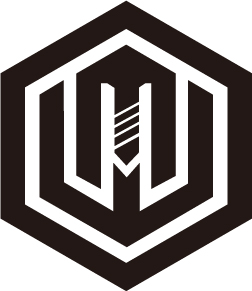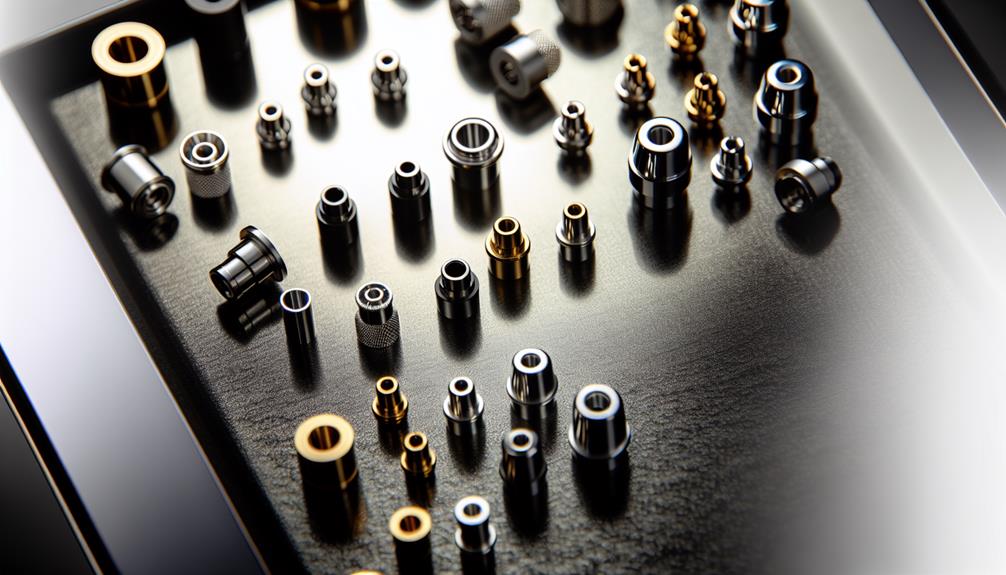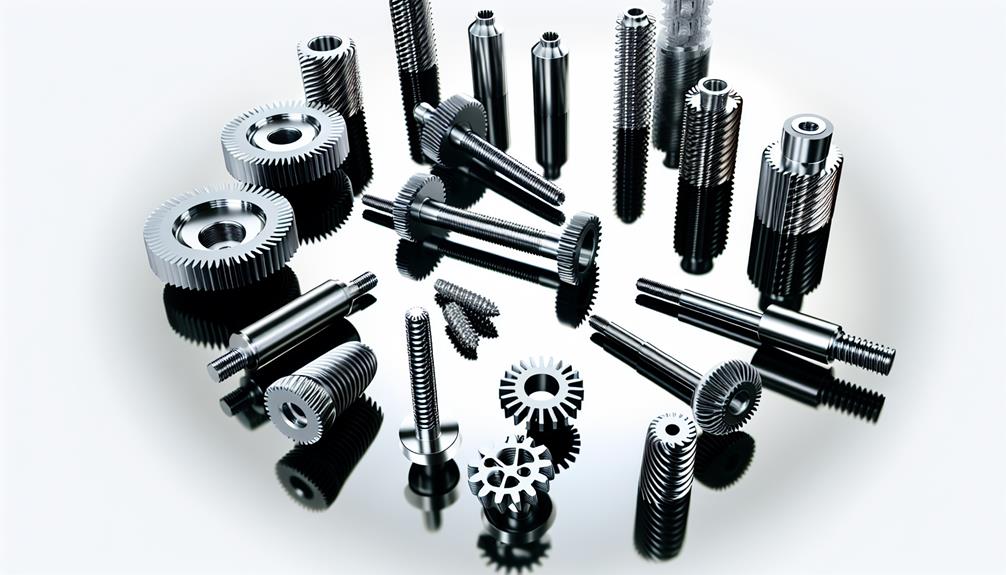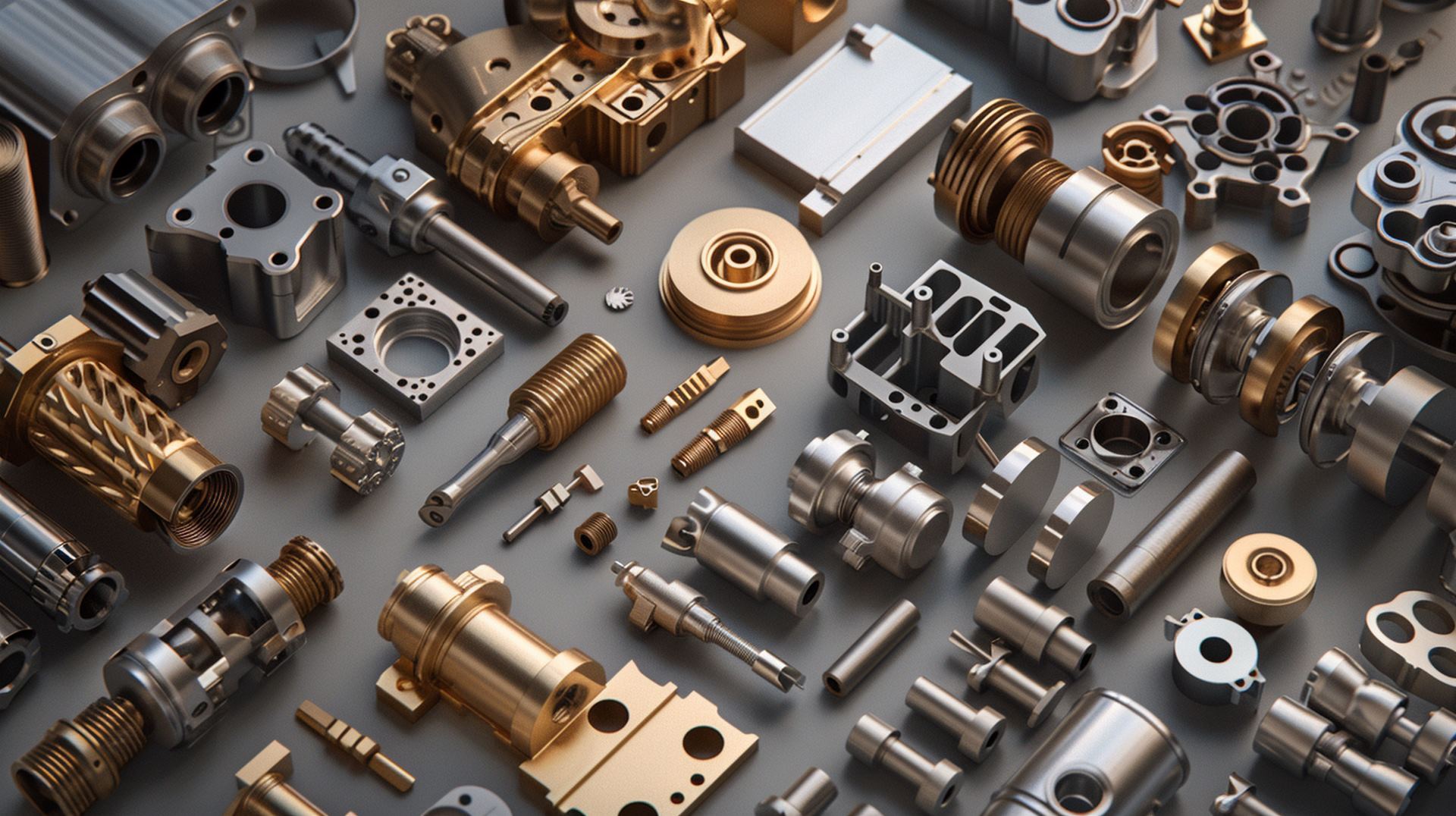Exploring CNC Machined Parts: From Concept to Production
In the realm of modern manufacturing, Computer Numerical Control (CNC) machining stands as a cornerstone, transforming rudimentary concepts into tangible, precise components. These CNC machined parts, whether they comprise the engine of an automobile or the intricate inner workings of a wristwatch, are integral to the functionality of various products we use daily.
As we venture into the intricate process that brings these parts to life, from design conception to the production line, we will shed light on the sophistication of CNC machining, the variety of materials utilized, and the meticulous attention to detail required in design considerations.
Yet, as we uncover these insights, we are left to question - what truly sets apart CNC machined parts in the broader spectrum of manufacturing methods?
Key Takeaways
- CNC machining offers fast production, precise accuracy, material versatility, and cost savings.
- CNC machined parts find applications in industries like aerospace, automotive, and medical devices for their precision and reliability.
- Electric Discharge Machining (EDM) services shape hard metals with precision through wire and sinker EDM processes.
- Common materials for CNC machined parts include metals like Aluminum, Stainless Steel, Brass, various Steel types, and plastics like ABS and Nylon.
1. What Are Cnc Machined Parts?
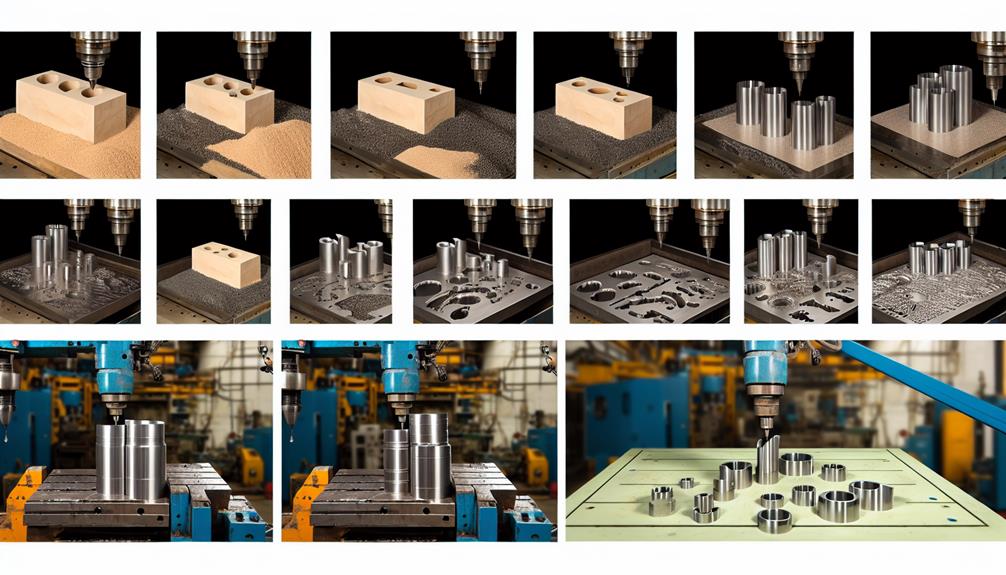
CNC machined parts, the unsung heroes of contemporary manufacturing, refer to components that have been cut, shaped, and formed using Computer Numerical Control machinery, a specialized form of automation that enables precise and efficient production. Key to this process is part accuracy, which speaks to the high precision in measurement and production attained by the machinery. This is achieved through meticulous machine programming, a task that demands a high level of operator skills.
The operator is tasked with setting up the CNC machine, programming its operation, and supervising its performance. Their expertise and vigilance are critical in maintaining the desired level of part accuracy. Regular maintenance requirements, as stipulated by the manufacturer, must be adhered to ensure the machine's optimal performance and longevity. This includes routine checks and necessary modifications.
In addition, safety precautions must be taken to protect the operator from potential hazards associated with the machine's operation. These precautions might include the use of protective clothing and safety glasses, adherence to machine operating instructions, and maintaining a safe distance from the machine during operation. All these factors work together to ensure the efficient and safe production of CNC machined parts.
2. What Is Cnc Machining?
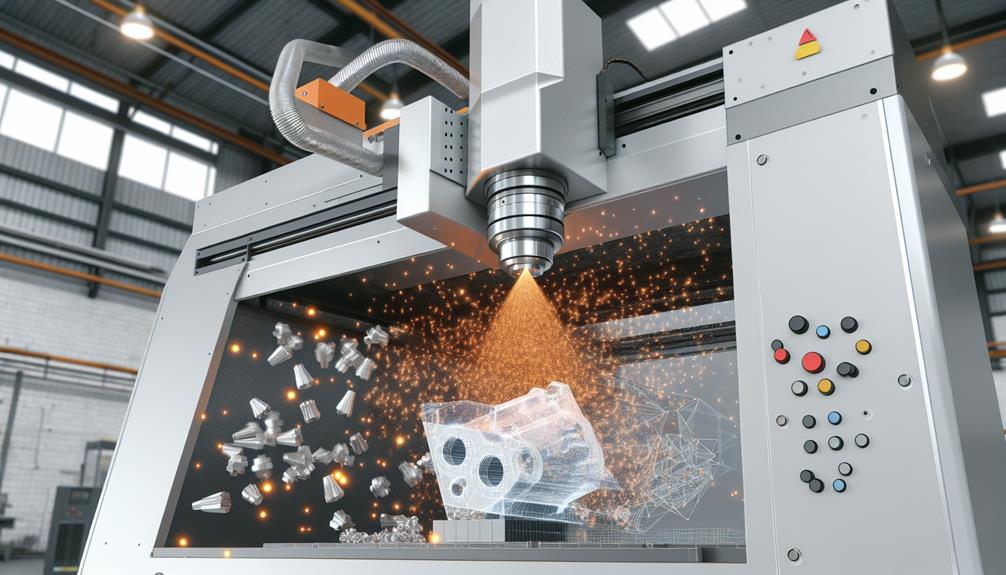
In the realm of modern manufacturing, CNC machining is a process that utilizes computerized controls to operate and manipulate machine and cutting tools to shape stock material—often metal, plastic, wood, foam, or composites—into custom parts and designs. This innovation represents a significant leap in the machining evolution, strengthening precision, speeding production, and allowing for intricate designs previously impossible.
The industry impact of CNC machining has been profound. It has revolutionized the production process, providing unparalleled control over complex tasks and enabling greater efficiency and productivity. The heart of this process lies in CNC programming, where digital instructions guide the machinery to create precise parts. This requires specialized operator training, equipping personnel with the skills to master this complex technology.
However, the environmental implications of CNC machining should not be overlooked. While it increases productivity and minimizes waste, the energy consumption of these machines, and the potential for harmful by-products, necessitate responsible use and innovative solutions to minimize environmental impact. Overall, CNC machining represents a pivotal advancement in modern manufacturing, offering a powerful blend of precision, control, and efficiency.
3. Features of Cnc Machining
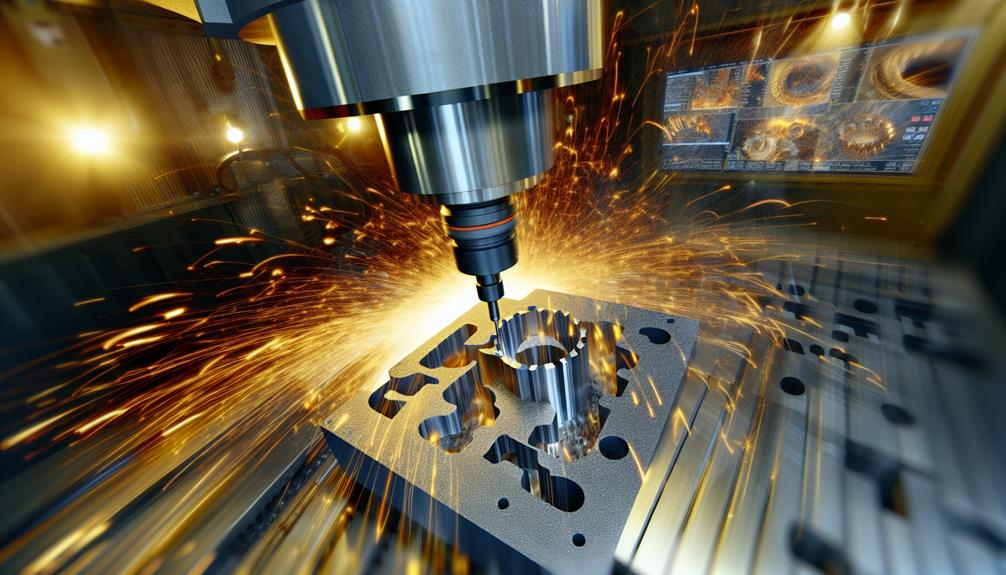
In our exploration of CNC machined parts, we now turn our attention to the specific features of CNC machining. This includes a detailed consideration of both the advantages and disadvantages inherent within this technology.
The Advantages of Machined Parts
With an array of benefits, machined parts offer superior features such as fast and repeatable production, precise accuracy, versatility in material use, scalable volume, custom surface finishes, and substantial cost savings.
The production benefits are notable, with machined parts providing efficient, high-speed manufacturing that ensures repeatability for large-scale orders. This precision is coupled with material advantages, enabling the use of diverse materials ranging from metals to plastics, maximizing product versatility.
Scalability options are also inherent in CNC machining, allowing for the adjustment of production volume based on demand. Custom surface finishes further enhance product appeal, delivering quality aesthetic and functional attributes.
Lastly, the streamlined processes of CNC machining translate into significant cost savings, giving businesses a competitive edge.
The Disdvantages of Machined Parts
Despite the numerous benefits of machined parts, it's crucial to acknowledge some inherent disadvantages. Material limitations often pose challenges to the CNC machining process, limiting the range of products that can be produced. This leads to production challenges where complex shapes or designs cannot be accurately replicated.
Additionally, a thorough cost analysis often reveals high equipment and maintenance costs, which may not be feasible for smaller enterprises. Tool wear is a constant concern, affecting both the quality control processes and the longevity of the machinery itself. Furthermore, the scale effect can affect production rates, particularly for larger parts, making it more time-consuming and costly.
These disadvantages must be carefully considered when opting for CNC machined parts.
Applications and Products of Cnc Machined Parts
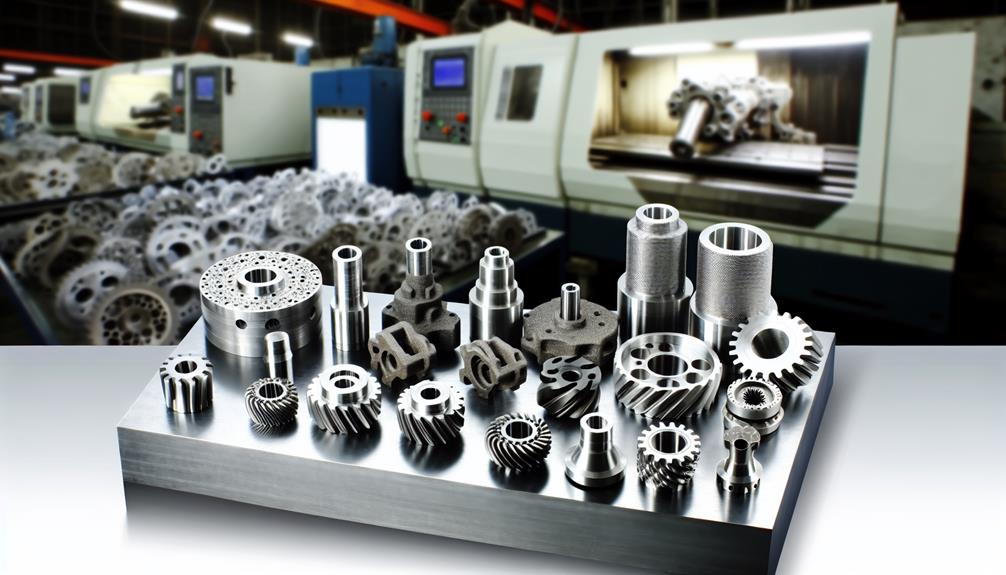
CNC machined parts, such as brackets, adapters, knobs, plates, spacers, heat sinks, standoffs, bushings, levers, cranks, and shafts, have vast applications across numerous industries. These precision components are often used in custom applications, where their high level of accuracy and repeatability is essential.
One significant area of application is the aerospace industry. Due to the critical nature of aerospace components, CNC machined parts are preferred for their ability to meet rigorous standards of precision and reliability. These parts are used in everything from the construction of spacecraft to the creation of intricate navigation systems.
Similarly, the automotive sector also heavily relies on CNC machining for the production of various parts. From engine components to bodywork, CNC machined parts contribute significantly to the overall functionality and performance of vehicles.
In the field of medical devices, these parts are indispensable. CNC machining is often used to produce complex and precision-based components required in medical equipment. From surgical instruments to implantable devices, CNC machined parts are a critical aspect of modern medical advancements, offering unparalleled precision and consistency.
This reliance across diverse sectors demonstrates the breadth of applications and products that CNC machined parts contribute to.
5. How Cnc Machining Works?
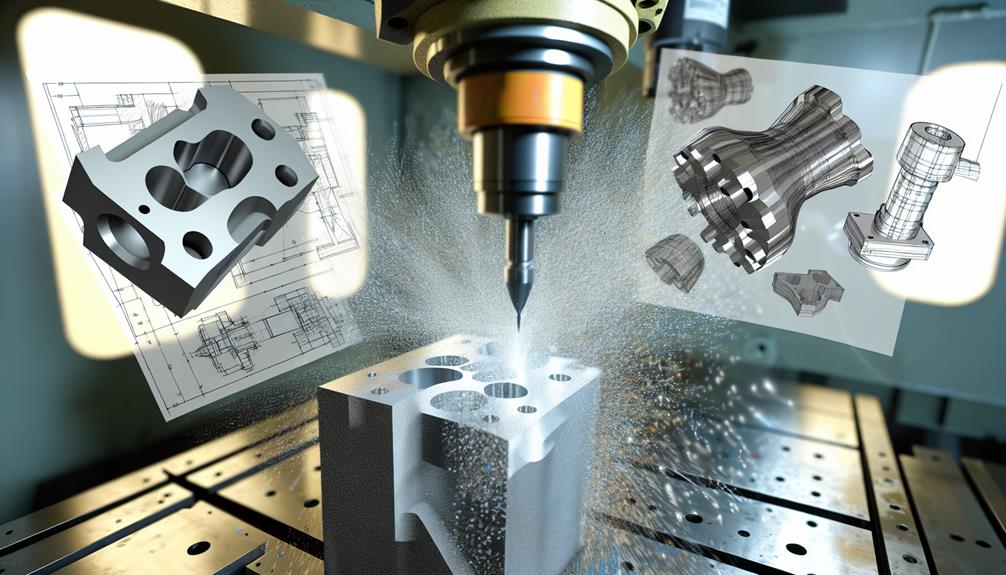
Understanding the vast applications and critical role of CNC machined parts in various sectors naturally leads us to question the processes involved in their creation. The CNC machining process is a precise method that leverages CNC tooling technology and CNC cutting tools to create parts with exceptional accuracy.
| Steps in CNC Machining Process | Description |
|---|---|
| Design | A 3D model is created using CAD software. |
| Programming | The model is converted into CNC machine programming language. |
| Setup | The CNC machine is set up with the required CNC cutting tools and materials. |
| Machining | The CNC machine executes the program, precisely machining the part. |
| Quality Control | The part is inspected for accuracy and quality. |
This table provides a simplified overview of the process, highlighting the critical role of precision machining. Each step is critical to the success of the final product, from the initial design phase to the quality control checks. The consistent and precise nature of the CNC machining process allows for the mass production of parts that are identical and meet the strictest quality requirements. The use of CNC tooling technology and advanced CNC machine programming ensures the parts are produced with the highest level of precision.
6. Main Processes of Cnc Machining
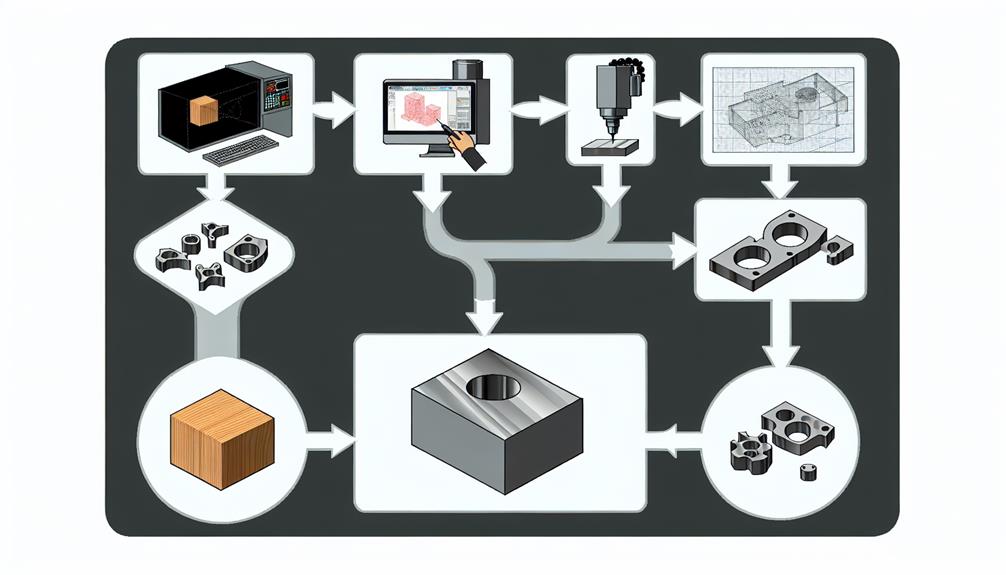
The realm of CNC machining is characterized by several key processes that enable the creation of precision parts. One of the primary methods includes CNC turning and milling.
This subsequent discussion will focus on these crucial procedures, their roles, and how they contribute to the overall CNC machining operation.
Cnc Turning and Milling
Delving into the heart of CNC machining, we encounter two main processes known as turning and milling, which are fundamental to the creation of precision-engineered parts. These processes are influenced by factors such as tool selection, operator training, machine maintenance, and industry advancements. They can also have an environmental impact.
- Tool selection affects the quality of the output and efficiency of the process.
- Operator training is crucial in ensuring the machine is used effectively and safely.
- Machine maintenance is essential to keep the machine running smoothly and extend its life.
- Industry advancements can lead to more efficient and precise machining processes.
- Environmental impact is a consideration, as some processes may produce waste or require significant energy.
7. Electric Discharge Machining Services
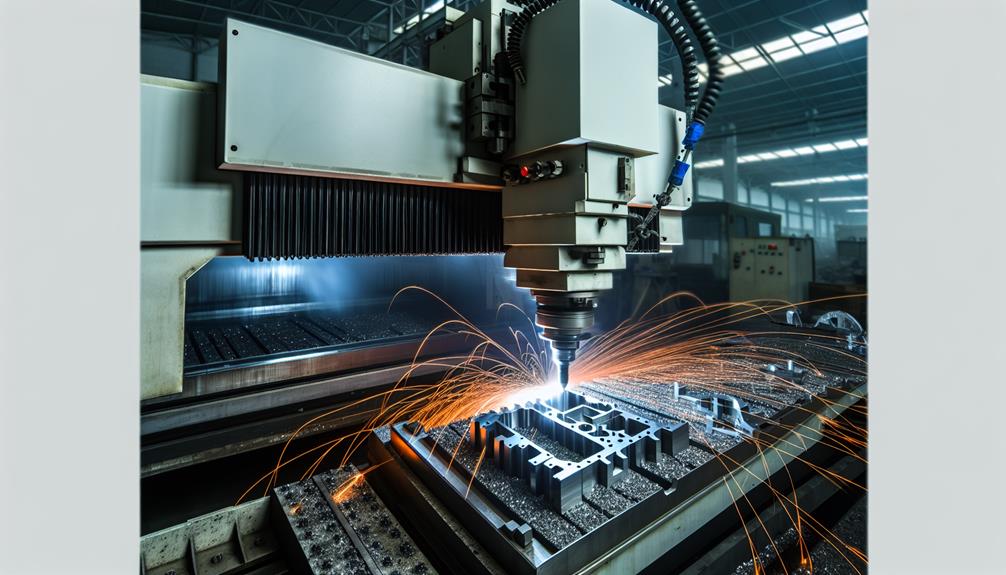
In the realm of CNC machined parts, Electric Discharge Machining (EDM) services hold a significant position due to their unique ability to shape hard metals with precision. This is achieved through two main discharge types: wire and sinker EDM, each offering varying precision levels.
With technological advancements, EDM services have evolved to offer higher accuracy and reduced lead times. However, the efficiency of the process is highly dependent on equipment maintenance. Regular maintenance ensures optimal operation, leading to superior results.
Additionally, safety measures are crucial in the EDM process, as it involves high electrical discharges. Operators must be trained on handling the equipment safely to prevent accidents and ensure smooth operations.
The following table provides an overview of the key aspects of EDM services:
| Aspect | Description |
|---|---|
| Discharge types | Wire and Sinker EDM |
| Precision levels | High accuracy and precision |
| Equipment maintenance | Regular maintenance for optimal operation |
| Safety measures | Training for safe operation |
| Technological advancements | Evolutions for increased efficiency and reduced lead times |
8. Cnc Machined Parts Capabilities
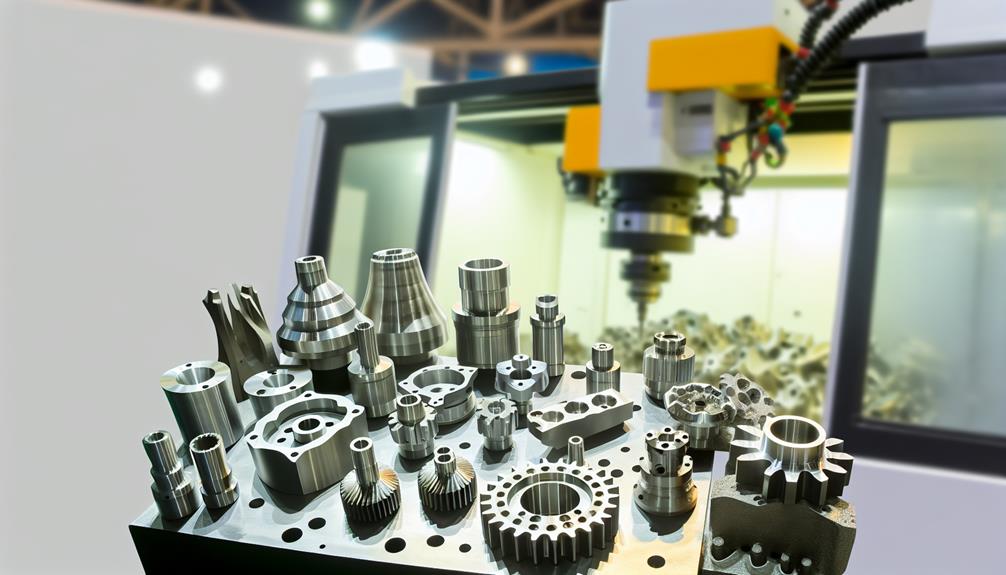
Expanding on the multifaceted world of CNC machined parts, we now turn our attention to the capabilities these parts offer in various industrial applications. The role of CNC machined parts in industries cannot be overstated, and their capabilities are characterized by a number of unique attributes.
- Precision control: CNC machined parts offer an unmatched level of accuracy and repeatability, which is crucial in industries where precision is a top priority.
- Cost efficiency: These parts significantly reduce the overall production costs by minimizing waste and maximizing resource utilization.
- Production speed: With their ability to work tirelessly and consistently, CNC machined parts significantly enhance production speed.
- Maintenance requirements: These parts require less maintenance compared to their manual counterparts, thus reducing downtime and enhancing productivity.
Furthermore, the deployment of CNC machined parts has a profound impact on the workforce. It not only reduces the need for manual labor but also necessitates the need for skilled workers who can operate and manage these machines. Thus, CNC machined parts have the potential to revolutionize industries by offering superior precision control, cost efficiency, increased production speed, and reduced maintenance requirements.
9. Materials Used for Cnc Machined Parts
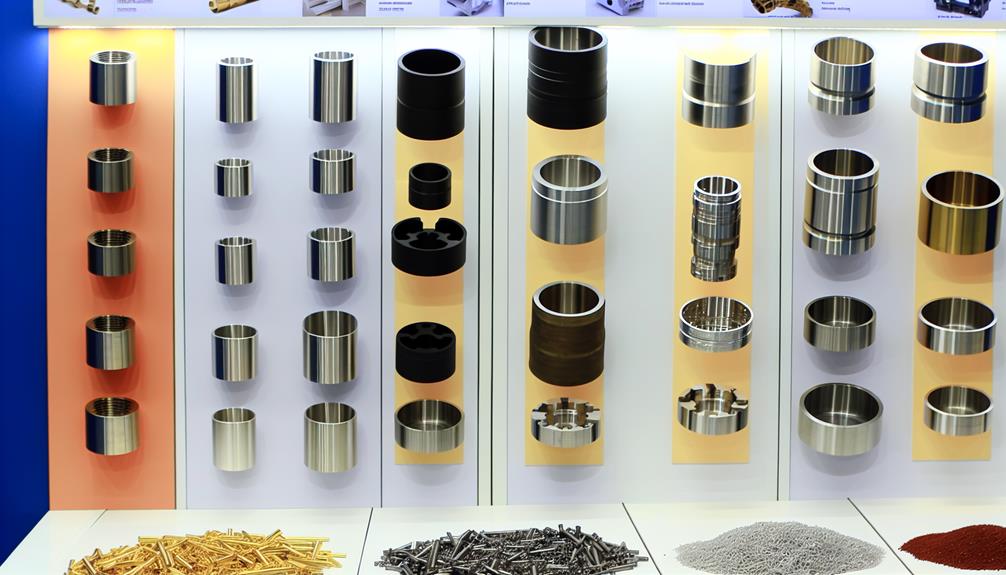
The variety of materials utilized in CNC machining significantly influences the functionality and performance of the finished parts.
Primarily, these materials fall into two categories: metals and plastics.
Each category houses a diverse range, offering unique properties and benefits that cater to specific applications within various industries.
Metal:
Diving into the realm of metals used for CNC machined parts, a diverse range from Aluminum and Stainless Steel to Brass, Copper, Titanium, and various types of Steel like Mild, Alloy, Tool, and Spring are routinely employed. These materials, selected based on their properties, are processed using specific machining techniques to meet desired specifications. Surface treatments further enhance the functionality and aesthetics of these components, making them integral in prototype development and mass production.
Metal Selection: Considerations include strength, durability, cost, and application.
Machining Techniques: Each material requires suitable techniques for optimal results.
Material Properties: Factors like hardness and durability dictate the choice of metal.
Surface Treatments: These processes improve appearance, corrosion resistance, and more.
Plastic:
Shifting focus to the domain of plastics used for CNC machined parts, a multitude of materials are commonly employed. These include ABS, Polycarbonate, Nylon, Polypropylene, POM, PTFE, PMMA, Polyethylene, PEEK, Bakelite, FR4, Rubber, and Carbon Fiber.
These materials are chosen through careful material selection, focusing on their suitability to the requirements of the end product. Plastic machining, using CNC programming, enables precision cutting of these materials to create intricately detailed parts.
Depending on the type of plastic used, different surface finishing methods may be applied to achieve the desired aesthetic and functional properties. By understanding the characteristics of these materials and the flexibility of CNC machining, businesses can take full control of their production process, ensuring a fit-for-purpose and high-quality end product.
10. Cnc Machined Parts Tolerances

In the realm of CNC machining, achieving precise tolerances is critical to ensuring the production of high-quality, custom parts. This precision is achieved through rigorous tolerance analysis, which examines the cumulative effect of part and assembly tolerances to ensure the final product meets the desired precision requirements.
Dimensional accuracy is a key component in this process, ensuring the consistent production of parts that fit well together and function as intended. This accuracy is maintained through strict quality control measures and adherence to manufacturing standards.
Understanding the importance of tolerances in CNC machined parts, consider the following:
- Tolerance analysis enables the prediction of manufacturing variation, contributing to efficient design and high-quality outcomes.
- Precision requirements are driven by the specifications of the final product, influencing the selection of materials, manufacturing processes, and quality control measures.
- Dimensional accuracy ensures parts fit and function together as intended, enhancing the overall performance and lifespan of the final product.
- Quality control procedures, aligned with industry-specific manufacturing standards, guarantee the consistency and reliability of CNC machined parts.
In essence, tolerances form the backbone of CNC machining, underpinning the production of superior custom parts.
11. Cnc Machined Parts Surface Finishes
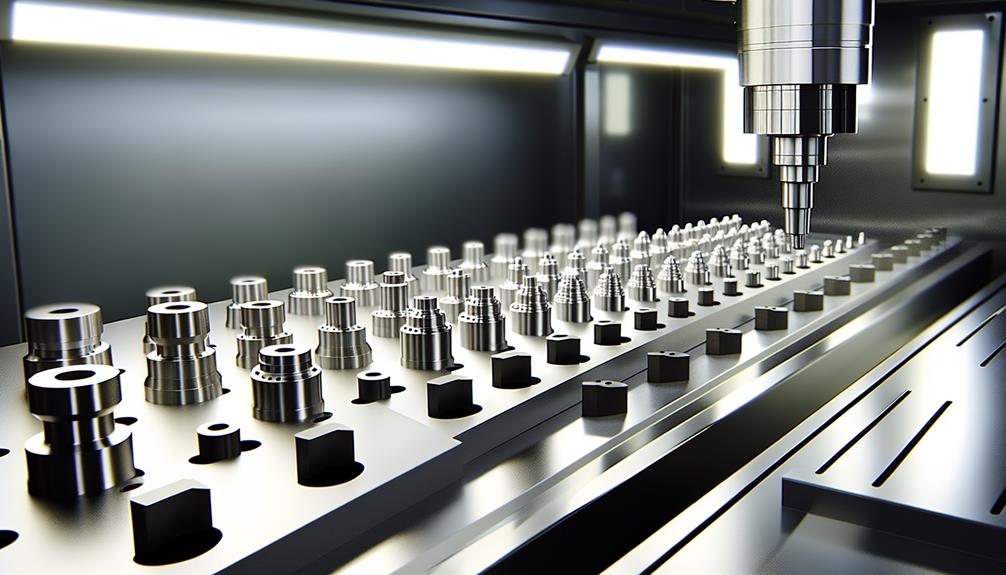
Exploring the vast array of surface finishes for CNC machined parts reveals a spectrum of options, each offering unique characteristics and benefits depending on the application. Surface finish options range from the standard as-milled finish to more complex finishes such as bead blast, anodized color, or even gold plating.
The finishing techniques employed are diverse and often require specialized expertise. For example, electropolishing is a technique that enhances the corrosion resistance, removes surface flaws, and improves the overall surface finish. Polishing methods, such as bead blasting, can be used to create a uniform, matte surface on the part.
Coating choices also play an integral role in the final appearance and functionality of the part. Options such as chrome plating, nickel plating, or powder coating provide additional protection against corrosion while also improving the aesthetic appeal of the machined part.
Surface treatment processes, such as anodizing, black oxide treatment, or chemical conversion coating, can improve the durability and longevity of the part while also enhancing its visual appeal. These processes allow for a high level of customization and can be tailored to meet the specific requirements of any application.
12. Design Considerations of Cnc Machined Parts
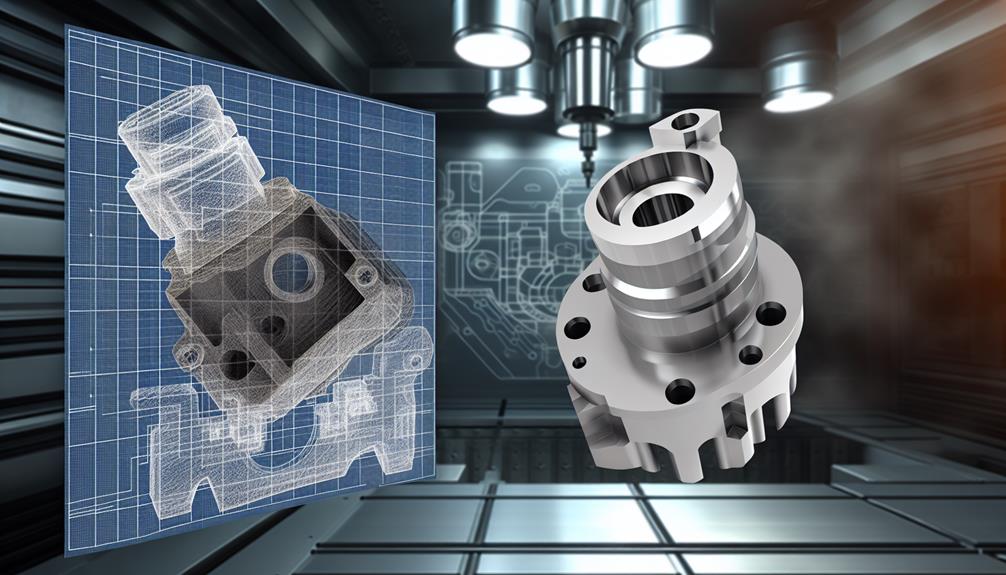
When designing CNC machined parts, several critical factors like undercuts, wall thickness, protrusions, cavities, holes, threads, and scale need to be meticulously considered to ensure precision and functionality. These elements play vital roles in the overall operational efficiency of the finished product.
Material selection is an integral part of the design process. The choice of material directly impacts the part's performance, longevity, and cost.
Tool paths, on the other hand, determine the movement of the machine tools. A well-planned tool path can contribute to manufacturing efficiency, reduce waste, and enhance the part's quality.
Here are some of the essential design considerations:
- Optimal use of undercuts, protrusions, and cavities
- Ensuring the correct wall thickness
- Proper positioning and sizing of the holes and threads
- Precise scaling of the part
Prototype testing is a necessary step that helps validate the design before moving into production. It helps identify any design flaws early, saving time, money, and resources.
Cost analysis and production planning are crucial for maintaining control over the entire process. They ensure that the project stays within budget and on schedule while delivering a product that meets the required specifications.
Frequently Asked Questions
What Is the Average Cost of CNC Machined Parts?
The average cost of CNC machined parts varies widely due to pricing factors such as material selection, industry variations, and outsourcing costs. Effective budget planning can help manage these costs and optimize production efficiency.
How Long Does It Typically Take From Concept to Production for CNC Machined Parts?
The timeline from concept to production for CNC machined parts depends on various factors such as the designing process, material selection, prototype testing, production timeline and final quality checks. It can typically range from weeks to months.
What Are Some Common Issues or Problems That Might Occur During the CNC Machining Process?
Common issues during the CNC machining process include tool breakage, material deformation, machine overheating, inaccurate programming, and inadequate maintenance. These problems can disrupt production timelines and compromise the quality of the final product.
Can CNC Machined Parts Be Recycled or Reused?
Yes, CNC machined parts can be recycled or reused, depending on material considerations. The recycling process offers sustainability benefits, while reuse strategies can mitigate environmental impact, thus promoting a more sustainable manufacturing model.
What Qualifications Should One Look for When Hiring a CNC Machinist?
When hiring a CNC machinist, the key qualifications to seek are comprehensive machinist training, proven technical skillsets, and software proficiency. Additionally, the importance of certification and the machinist's experience should not be underestimated.
Mikehardware-your trusted cnc machined parts manufacturer
In conclusion, CNC machined parts take center stage in various industry applications with their high precision, versatility, and efficiency.
The process, from concept to production, is a symphony of technology and expertise. It requires careful consideration of materials, tolerances, and surface finishes.
As the world continues to evolve, so too does the art and science of CNC machining, painting a future of even more intricate designs and innovative applications.
At Dongguan Mike Hardware Co., Ltd., precision engineering meets innovation, delivering impeccable CNC product manufacturing solutions. Explore our array of customized fasteners, screws, and coatings, ensuring your projects excel in performance, precision, and quality.
Contact us for a free quote of your ideal cnc machined parts.
